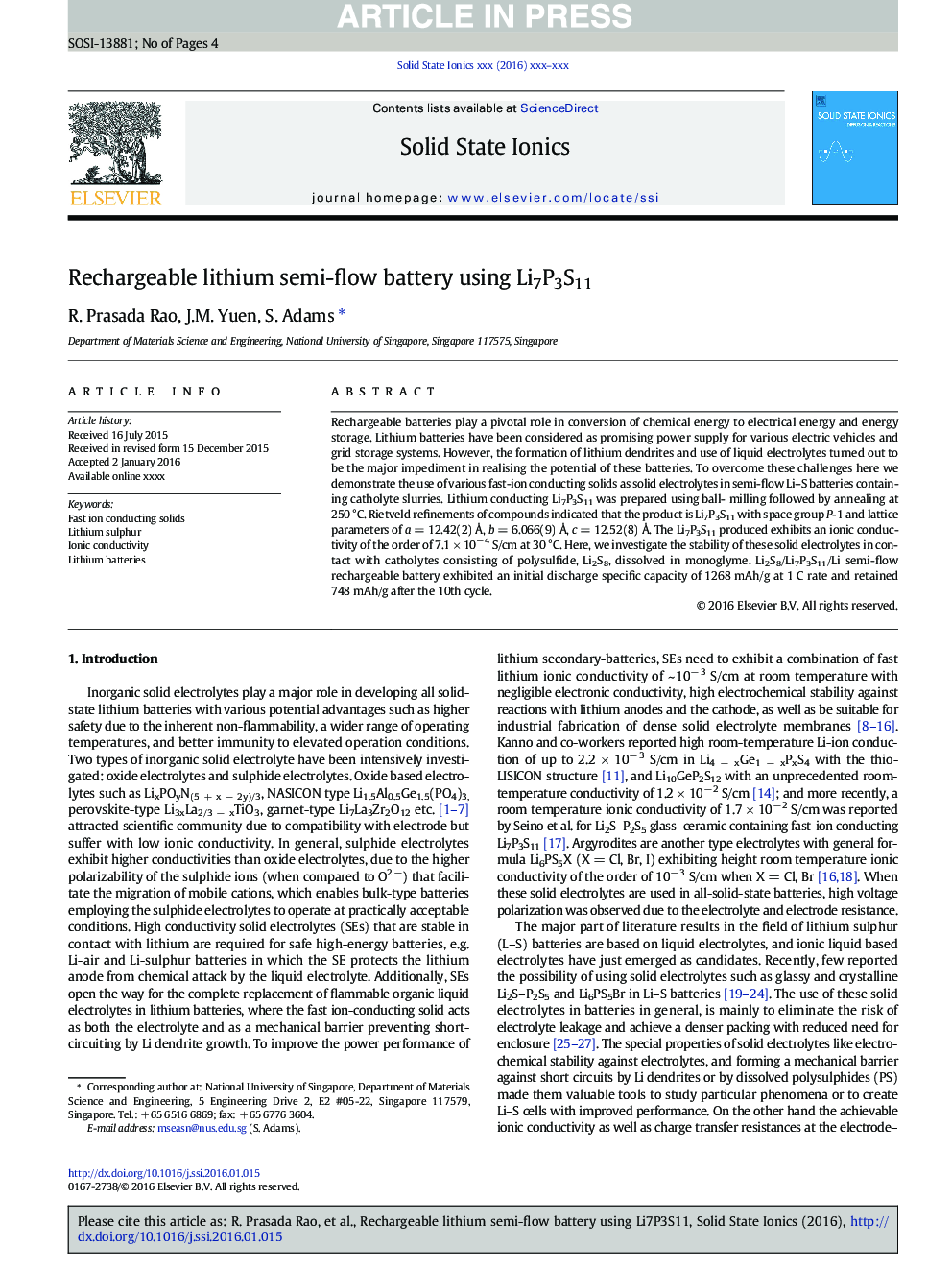| Article ID | Journal | Published Year | Pages | File Type |
|---|---|---|---|---|
| 7745267 | Solid State Ionics | 2016 | 4 Pages |
Abstract
Rechargeable batteries play a pivotal role in conversion of chemical energy to electrical energy and energy storage. Lithium batteries have been considered as promising power supply for various electric vehicles and grid storage systems. However, the formation of lithium dendrites and use of liquid electrolytes turned out to be the major impediment in realising the potential of these batteries. To overcome these challenges here we demonstrate the use of various fast-ion conducting solids as solid electrolytes in semi-flow Li-S batteries containing catholyte slurries. Lithium conducting Li7P3S11 was prepared using ball- milling followed by annealing at 250 °C. Rietveld refinements of compounds indicated that the product is Li7P3S11 with space group P-1 and lattice parameters of a = 12.42(2) Ã
, b = 6.066(9) Ã
, c = 12.52(8) Ã
. The Li7P3S11 produced exhibits an ionic conductivity of the order of 7.1 Ã 10â 4 S/cm at 30 °C. Here, we investigate the stability of these solid electrolytes in contact with catholytes consisting of polysulfide, Li2S8, dissolved in monoglyme. Li2S8/Li7P3S11/Li semi-flow rechargeable battery exhibited an initial discharge specific capacity of 1268 mAh/g at 1 C rate and retained 748 mAh/g after the 10th cycle.
Keywords
Related Topics
Physical Sciences and Engineering
Chemistry
Electrochemistry
Authors
R. Prasada Rao, J.M. Yuen, S. Adams,
